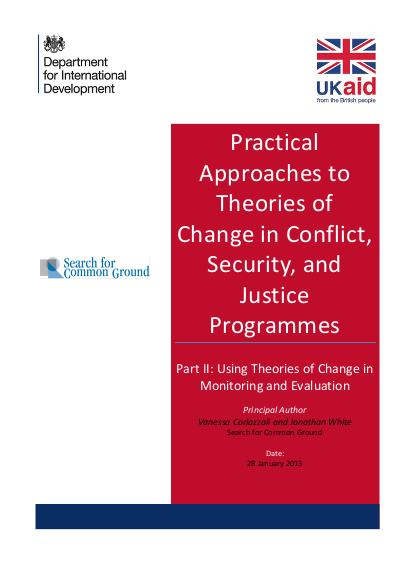
The goal of this document is to improve the effectiveness of DFID programmes and the measurement of their impacts by providing DFID Advisers with the practical skills to develop high quality theories of change, to understand the role they play in programme design and assessment. It is intended for DFID advisors to more clearly and explicitly articulate their theories of change as a means of improving the effectiveness of interventions. Part I first explores the fundamentals of theories of change: what they are, why they are important, and how to create a theory of change. It explores theories of change at different levels, and concludes with advice on how theories of change can enhance the effectiveness and relevance of programming. Part II continues to build upon Part I by focusing on how theories of change can be used in the monitoring and evaluation stages of the project cycle. It provides practical guidance on how and why to use theories of change-focused monitoring and evaluation strategies, particularly exploring the ways in which theories of change can be included in any evaluation approach.